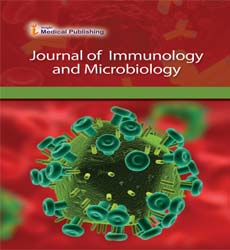C-disaccharide glycopeptides as potential anti-cancer vaccines
Abstract
Cancer-associated mucin glycoprotein MUC1 is characterized by the presence of altered carbohydrates such as Tn (α-N-acetylgalactosamine), sTn (sialyl-1-6-Tn) and the Thomsen-Friedenreich (TF: β-D-Galp-1-3−α-D-GalNAcp) antigen (tumor associated carbohydrate antigens: TACAs) that are conjugated to proteins via O-α-galactosylation of serine or/and threonine. Patients immunized with synthetic TF conjugated with KLH (keyhole limpet hemocyanin) + QS21 adjuvant can generate IgM and IgG antibodies.1 Because the disaccharide TF is hydrolyzed rapidly in the body, strong immune response requires longer-lived disaccharides. Fluororinated TACAs have been proposed which elicit IgG antibodies found to cross-react with native TF epitopes.2,3 We have found that the C-linked disaccharide analogue 1 (constructed applying Danishesky's method for the conjugation with KLH 4) + QS21 adjuvant induces a strong immune response in mice. Interestingly, much weaker immune response was observed with a stereoisomeric antigen constructed with the α-C-galactoside analogue of TF disaccharide (α-D-Galp-1-CH2-3-α-D-GalNAc-O-Ser).5 Several strategies and methods have been developed for the synthesis of C-linked disaccharides including disaccharide mimetics incorporating iminosugars C-linked to sugars and sugar mimetics such as conduritols and cyclitols. The latter work was motivated by the search for specific glycosidase and glycosyltransferase inhibitors that are potential drugs against cancers and other diseases.
Open Access Journals
- Aquaculture & Veterinary Science
- Chemistry & Chemical Sciences
- Clinical Sciences
- Engineering
- General Science
- Genetics & Molecular Biology
- Health Care & Nursing
- Immunology & Microbiology
- Materials Science
- Mathematics & Physics
- Medical Sciences
- Neurology & Psychiatry
- Oncology & Cancer Science
- Pharmaceutical Sciences
